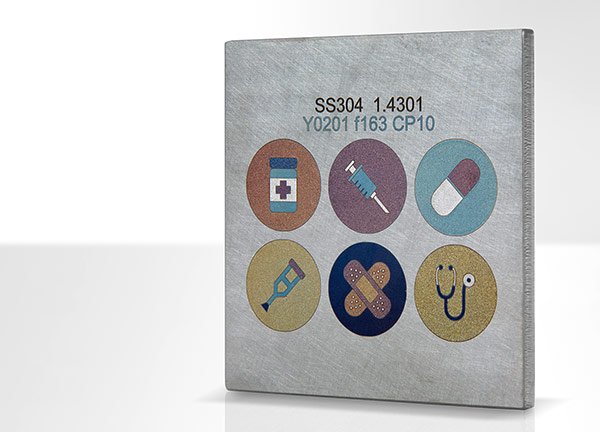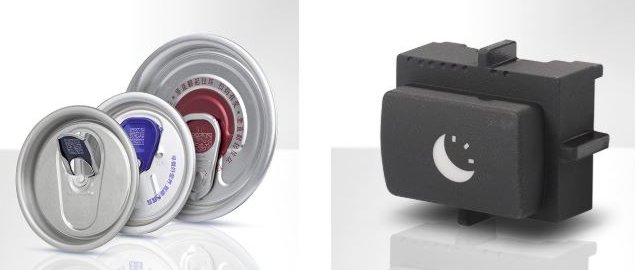Laser Etching Metals and Plastics
Today’s laser etching machines are a near essential production tool in most industries. A laser etching machine can mark or engrave almost any material with the utmost precision and efficiency.
Which laser etching machine?
For direct laser etching of industrial products such as medical devices, automotive and electronic components, fiber lasers, CO2 lasers and UV lasers are the main categories of laser used.
Which one you choose can depend not just on the material, quality and marking effect you require. Other factors such as withstanding extreme conditions or particular cleaning procedures can play their part. Whether the laser needs to be integrated into a production line or act as a workstation for stand-alone operation is another consideration.

Economic fiber lasers
Flexibility and economy are the chief reasons why fiber lasers are used in the precise marking of plastics and metals in a wide range of industries.
For etching medical devices, the fiber laser comes into its own because it is so versatile and can mark medical stainless steel reliably and corrosion-free.
Fiber lasers are particularly suitable for integration into production lines. With the availability of extra small marking heads such as the new FOBA Titus™, integration is made even easier, saving time and costs.
Speedy CO2
Coated metals, paper, cardboard, glass and many plastics can all be marked by CO2 lasers with the maximum sharpness and accuracy.
CO2 lasers are fast with marking speeds of up to 2000 characters per second and line speeds up to 900 metres per minute. With customer specific configurations, these lasers are not just fast, they are highly flexible too.
High contrast UV
UV lasers create high contrast etchings on sensitive products through a photochemical effect. The heat output is ultra-low, allowing sensitive materials such as medical plastics, silicones, white polyamide, coloured tubes, cables or glass to be etched without damage to the product surface.
Laser etching machine processes
Laser etching machines can mark a variety of materials with a range of different processes.
Laser annealing applies an oxide layer to metals by local material heating. The result is a high contrast, readable marking. No material is removed in the process and the material surface remains flat. The oxide layer is usually black but colour effects are also possible.
Laser annealing is ideal for etching medical devices because it is corrosion-resistant and can withstand all manner of cleaning, disinfecting and passivation cycles.
Foaming/frothing
Carbon and colour pigments from additives or paints contained in plastics are heated locally by the laser.
As the carbon in the plastic oxidises to CO2, a foam layer is generated which appears as an embossed mark. The mark bubbles that settle on the surface reflect diffusely, creating light coloured marks on dark surfaces.
Colour removal and day/night etching

A laser etching machine can remove thin layers of plastic by superficial melting. The material or coating that has previously been applied to create a marking effect is removed so that the underlying different coloured plastic layer then becomes visible.
In the automotive industry, the procedure is used to create day/night designs on control elements and keyboards. The coating is removed from a transparent material and the resultant symbols can then be backlit.
Carbonising and Engraving
Mainly used on plastics, carbonisation is a darkening effect. The laser burns some components resulting in a dark discolouration, the contrast determined by the plastic composition and the basic colour of the material.
Carbonisation can also be used on organic materials such as paper, cardboard, wood or leather to create a dark effect.
Engraving is used when a deep mark is required for robustness. The procedure can be used on most materials.
For further information on the range of laser etching machines from our product partners, FOBA and FOBA’s associated integrated vision systems and production efficient software, please contact sales@tlm-laser.com